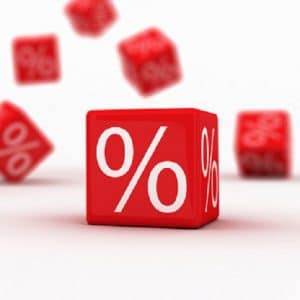Whats next for interest rates?
Interest rate bingo entails making a successful guess about when we’ll see our first interest rate rise in Australia since 2010, and for most of the year it’s been even money that the increase will come in early 2024.
Ever since November 2020, when the Reserve Bank of Australia (RBA) cash rate landed with a quiet thud at 0.1 per cent, the big question has been when will it go back up. Many Australians couldn’t believe that a cash rate could go so low. 
Cheap cash helped trigger a housing market boom and prices skyrocketed, adding fuel to the speculation that surely the cash rate would rise soon, if for no other reason than to cool this roaring bonfire of a housing market.
But RBA Governor Philip Lowe remained resolute, reiterating the key indicators that the Board was looking before a rate rise would even see the light of day on the agenda at the monthly meeting. They wanted to see inflation in the range of 2.0 to 3 per cent, real wages growth and strong jobs numbers – this data would support an argument that the economy was in growth mode. Then, and only then, would the Reserve Bank of Australia consider a rate rise.
We didn’t start the fire
As the housing market burned up, APRA began to look at the levers it could pull to dump some water on the blaze. With median house prices in the major capital cities soaring past $1 million, concern was mounting that the market was becoming extremely unaffordable.
Especially as most of Australia has enjoyed 20% growth in their properties throughout 2021.
In October, APRA increased the buffer rate from 2.0 per cent to 3.0 per cent, which would serve to reduce the number of successful loan applicants and, thus, remove some buyers from the market. Pumping the brakes, just a little.
This means lenders need to assess new borrowers’ ability to meet their loan repayments at an interest rate that is at least 3.0 percentage points above the loan product rate.
New signals
However, in November the RBA changed its policy on short-term bond yield suppression, leading pundits to speculate about other unexpected changes that could be in the offing. Dr Lowe said this change in policy reflected a strengthening of the economy and was a good sign about inflation.
The AFR reported last month that inflation was picking up, slightly faster than the RBA expected, and would likely remain within the target 2.0 to 3.0 per cent for the next few years.
Could this be the turning of the tide that leads to a cash rate rise?
Dr Lowe said the key indicator – wages growth – had still not been met and told the AFR that, “the board is prepared to be patient” for this target to be achieved.
What’s next for variable interest rates
Despite extraordinary pressure from aspiring property purchasers, who are facing being locked out of a continuously escalating housing market, the RBA, APRA and the Treasurer are maintaining a watching brief for now.
There are no significant indications that rates will rise this year, or next year. Potentially, there is evidence to suggest we may be looking at a late 2023 rate rise of less than a quarter of a percentage point, depending on the state of the economy at that time.
However, my best estimate based on current trends is that we will experience our 1st interest rate rise, by then it will be in 12 years, by the end of 2022.
The pressure, though, to take action now is mounting and with a federal election coming up, there may be questions asked about the increasing unaffordability of property in Australia and what the major parties plan to do about it. And it would take an extraordinarily strong-willed politician to resist voter demands at election time.
It does seem likely that whether the next rate rise comes in 2022, 2023 or as previously scheduled, in 2024, it will herald stronger economic times ahead.
What I suspect we may see however, it “out of cycle” rate rises being implemented by the banks, especially the big 4, as they try to claw back some interest margin in order to keep shareholders happen.
As they do, they will blame the “cost of funds” from around the world for these rate rises, with little or no care for mortgage holders.
So have your refinancing options at the ready, as no-one should pay a “lazy” tax or any lender more than what the market says, and there’s plenty of better offers than what the big banks are offering.
What’s next for fixed interest rates
If you haven’t already locked in or fixed your rates, well I’m sorry, but you’ve probably missed the boat!
For much of 2021 and late 2020, we’ve had fixed rates starting with a 1 in front for terms ranging up to 4 years, thanks to the Reserve bank issuing the banks some funding at zero percent interest.
And for the 1st time in a very long time, we had fixed rates lower the variable options and so many people have been able to “split” their loans to take advantage of these very low rates.
But in the last 2-3 months we’ve seen banks taking this back with interest rates rising by up to 1% and fixed rates now starting in the mid 2’s and reaching into the 3’s.
With this in mind, it’s to accept in most circumstances why you’d fix today, unless your personal circumstances warranted it, is a difficult conversation.
A word of caution
At this stage, Dr Lowe is urging owners not to overextend themselves with the additional equity suddenly to be found in their properties.
“Households in Australia already have high levels of debt relative to income. I think we’re building up medium-term risk if we are in a world where household debt is consistently growing, [much faster than incomes],” Dr Lowe was reported as saying in the Sydney Morning Herald.
With interest rates so low, it’s easy to forget that the repayments on a $1 million property can quickly get out of hand with just one or two rate rises of a quarter of a percentage point. Some economists are speculating that we may see some impact from as early as the first rate rise, where overextended borrowers face immediate, unmanageable impact. This is likely to be first-home buyers in some of the nation’s ritziest suburbs who have failed to take subsequent rate rises into account when factoring in their budget. This could trigger a softening of prices as sell-offs happen in pockets of suburbs around the country, most likely in Sydney and Melbourne.
In addition, the other significant factor to consider is that there are new COVID variants emerging on a semi-regular basis, it is impossible to forecast how this will impact the economy. However, with new vaccines being developed and vaccination rates continuing to rise, it’s hopefully going to be a minimal impact.
Intuitive Finance – the smart choice
The world of banking and finance can be a pretty daunting one for both novice and sophisticated investors and since our establishment in 2002 we’ve focused on providing outstanding service and business standards.
This approach was vindicated when we were named Victoria’s Best Finance Broker at the 2017 Better Business Awards.
So if you’re considering investing in, or developing, property, why not contact Intuitive Finance’s mortgage brokers today to ensure you have the right information and expert support on your side no matter what stage of the property ownership journey you are on.
The information provided in this article is general in nature and does not constitute personal financial advice. The information has been prepared without taking into account your personal objectives, financial situation or needs. Before acting on any information you should consider the appropriateness of the information with regard to your objectives, financial situation and needs.

